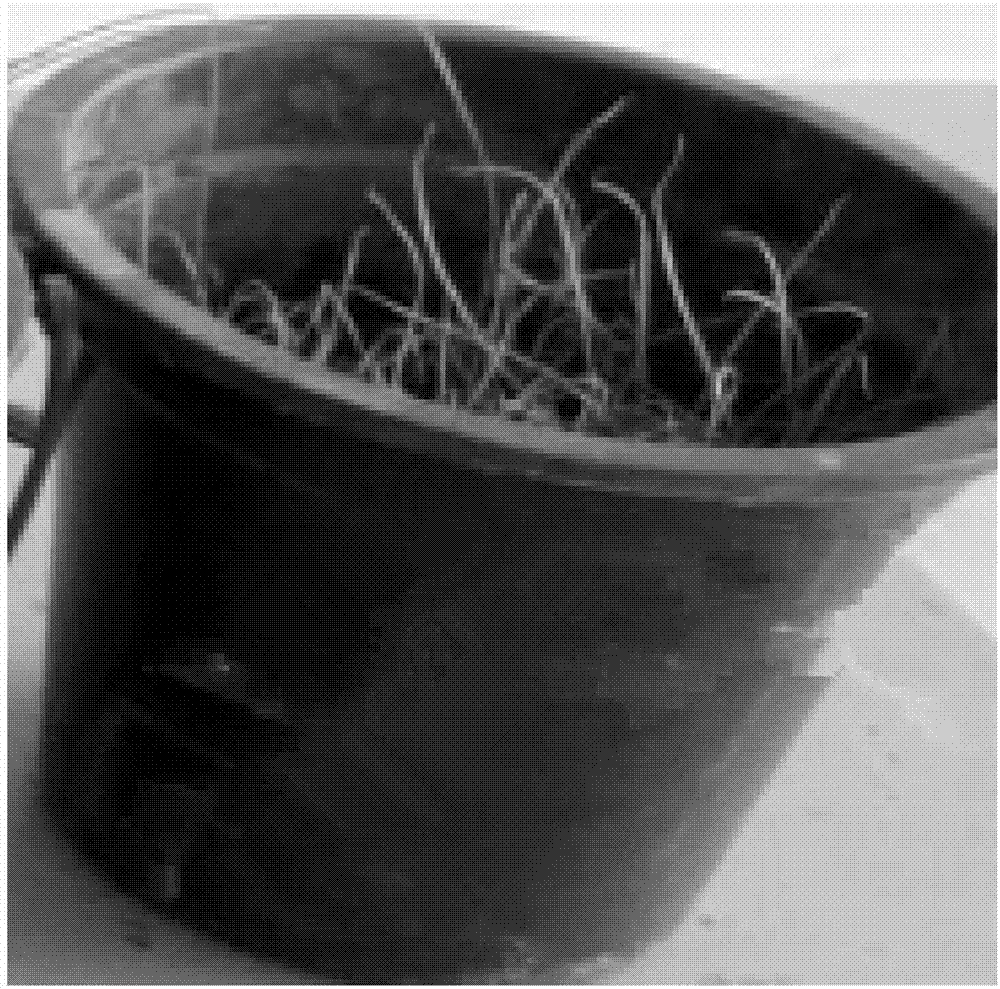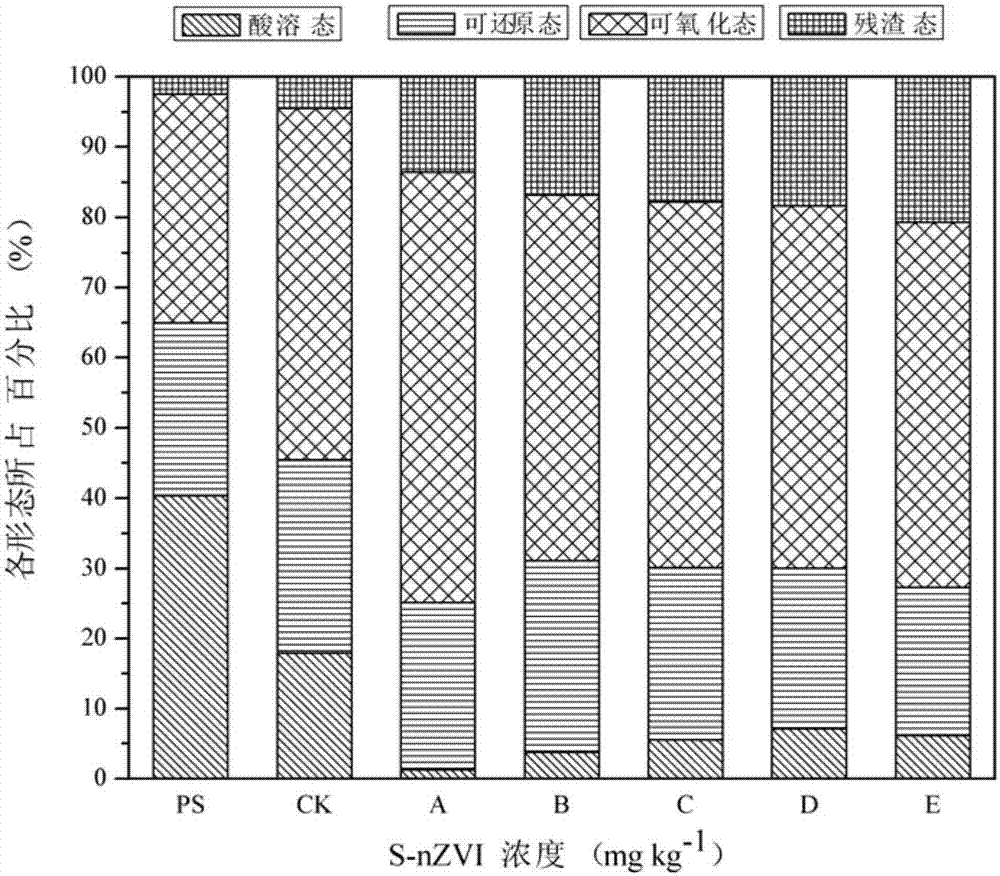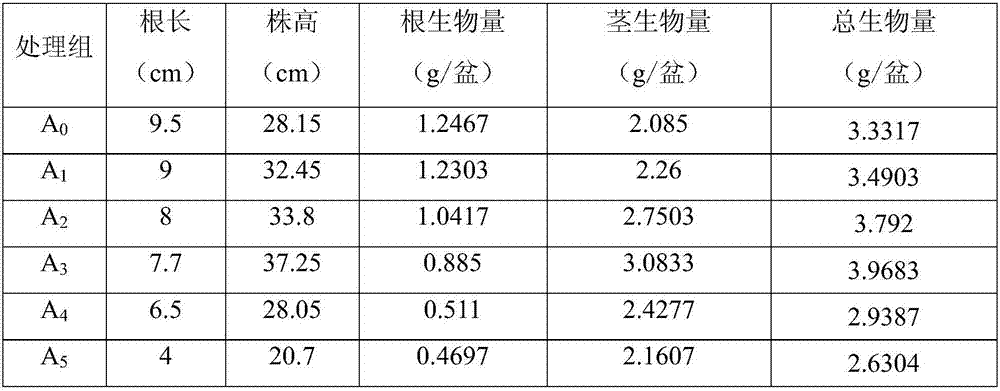Method for remediating heavy metal contaminated soil through modified nanoscale zero-valent iron reinforced plants
A nano-zero-valent iron and polluted soil technology, applied in the restoration of polluted soil, etc., can solve the problems of low treatment efficiency, low plant absorption, long growth cycle, etc., and achieve good treatment effect, high treatment efficiency, and growth fast effect
- Summary
- Abstract
- Description
- Claims
- Application Information
AI Technical Summary
Problems solved by technology
Method used
Image
Examples
Embodiment 1
[0030] Example 1: Investigate the effect of different additions of modified nano-zero-valent iron on plant growth
[0031] The method for enhancing phytoremediation of heavy metal-contaminated soil by using modified nano-zero-valent iron of the present invention includes the following steps: first adding starch-modified nano-zero-valent iron into air-dried Pb-contaminated soil and mixing, and then mixing the resulting Pb Plant seeds that have been germinated in the contaminated soil. When the plant seeds are grown to maturity, remove the whole plant from the Pb-contaminated soil for the following tests. The invention strengthens the extraction of heavy metals from the soil by the modified nano-zero-valent iron, and strengthens the plant root system to stabilize harmful heavy metals to reduce the harm of heavy metals in the soil and complete the restoration of heavy metal contaminated soil.
[0032] Specific experimental plan: Design six treatment groups, that is, add different amou...
Embodiment 2
[0038] Example 2: To investigate the effect of low-concentration starch modified nano-zero-valent iron S-nZVI (100-500mg / kg) on strengthening phytoremediation of lead-contaminated soil
[0039] Experimental method: Place ryegrass in a constant temperature and humidity incubator for 48 hours, the temperature is 37°C, and the humidity is 70%. Weigh 1 kg of air-dried soil for each pot, weigh 100, 200, and 500 mg of the prepared modified nano-zero-valent iron into the air-dried soil, and mix them evenly. The ryegrass seeds with full grains and not sinking were selected and sown evenly in each treatment pot, the seeding concentration was 5g / kg, and they were numbered as A, B, and C respectively. According to the lack of water in the soil, water regularly to keep the soil moisture content at 75-80% of the field water holding capacity. The experiment was carried out for 45 days (to the mature period) after sampling and analysis.
[0040] Take 0.5g of soil sample after harvesting plant...
Embodiment 3
[0049] Example 3: Investigate the effect of high-concentration starch modified nano-zero-valent iron S-nZVI (1000, 2000 mg / kg) on strengthening phytoremediation of lead-contaminated soil
[0050] Experimental method: Place ryegrass in a constant temperature and humidity incubator for 48 hours, the temperature is 37°C, and the humidity is 70%. Weigh 1 kg of air-dried soil for each pot, weigh 1000 and 2000 mg of the prepared modified nano zero-valent iron into the air-dried soil, and mix them evenly. The ryegrass seeds with full grains and not sinking were selected and sown in each treatment pot. The seeding concentration of the seeds was 5g / kg, and they were recorded as D and E respectively. According to the lack of water in the soil, water regularly to keep the soil moisture content at 75-80% of the field water holding capacity. The experiment was carried out for 45 days (to the mature period) after sampling and analysis.
[0051] Take 0.5g of soil sample after harvesting plant...
PUM
| Property | Measurement | Unit |
|---|---|---|
| particle diameter | aaaaa | aaaaa |
Abstract
Description
Claims
Application Information
 Login to View More
Login to View More - R&D
- Intellectual Property
- Life Sciences
- Materials
- Tech Scout
- Unparalleled Data Quality
- Higher Quality Content
- 60% Fewer Hallucinations
Browse by: Latest US Patents, China's latest patents, Technical Efficacy Thesaurus, Application Domain, Technology Topic, Popular Technical Reports.
© 2025 PatSnap. All rights reserved.Legal|Privacy policy|Modern Slavery Act Transparency Statement|Sitemap|About US| Contact US: help@patsnap.com



